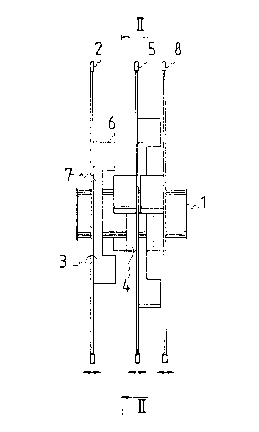Une partie des informations de ce site Web a été fournie par des sources externes. Le gouvernement du Canada n'assume aucune responsabilité concernant la précision, l'actualité ou la fiabilité des informations fournies par les sources externes. Les utilisateurs qui désirent employer cette information devraient consulter directement la source des informations. Le contenu fourni par les sources externes n'est pas assujetti aux exigences sur les langues officielles, la protection des renseignements personnels et l'accessibilité.
L'apparition de différences dans le texte et l'image des Revendications et de l'Abrégé dépend du moment auquel le document est publié. Les textes des Revendications et de l'Abrégé sont affichés :
| (12) Demande de brevet: | (11) CA 2068736 |
|---|---|
| (54) Titre français: | ASSEMBLAGE DE LAMES DE SCIE CIRCULAIRE |
| (54) Titre anglais: | CIRCULAR SAW BLADE ASSEMBLY |
| Statut: | Réputée abandonnée et au-delà du délai pour le rétablissement - en attente de la réponse à l’avis de communication rejetée |
| (51) Classification internationale des brevets (CIB): |
|
|---|---|
| (72) Inventeurs : |
|
| (73) Titulaires : |
|
| (71) Demandeurs : | |
| (74) Agent: | MARKS & CLERK |
| (74) Co-agent: | |
| (45) Délivré: | |
| (86) Date de dépôt PCT: | 1990-12-05 |
| (87) Mise à la disponibilité du public: | 1991-06-21 |
| Licence disponible: | S.O. |
| Cédé au domaine public: | S.O. |
| (25) Langue des documents déposés: | Anglais |
| Traité de coopération en matière de brevets (PCT): | Oui |
|---|---|
| (86) Numéro de la demande PCT: | PCT/FI1990/000291 |
| (87) Numéro de publication internationale PCT: | WO 1991008875 |
| (85) Entrée nationale: | 1992-05-14 |
| (30) Données de priorité de la demande: | ||||||
|---|---|---|---|---|---|---|
|
ABSTRACT OF THE DISCLOSURE
The present invention concerns a circular saw blade
assembly for a saw mill or similar apparatus used for-sawing
boards from logs, said circular saw blade assembly comprising
at least two circular saw blades (2) attachable to and
axially transferrable on a saw blade spindle (1) as well as
one or several edge milling cutters for shaping the board to
a correct width. The circular saw blade assembly in
accordance with the invention is implemented so that the
edging cutter is formed by edge cutter elements (3, 4)
adapted to adjacent circular saw blades (2, 5), whereby the
cutter elements are axially adjustable in relation to each
other along with the spacing adjustment of the circular saw
blades (2, 5), and each cutter element (3, 4) is comprised of
one or several cutter knives (6) and a block section (7)
having a recess machined to its face opposing the adjacent
cutter element and having a penetrating hole for the saw
spindle (1) to pass, whereby the knives (6) of the adjacent
cutter elements (3, 4) are aligned to rotate along a single
circle with an axial displacement of the elements at the
different points along the cutting circle.
Note : Les revendications sont présentées dans la langue officielle dans laquelle elles ont été soumises.
Note : Les descriptions sont présentées dans la langue officielle dans laquelle elles ont été soumises.

2024-08-01 : Dans le cadre de la transition vers les Brevets de nouvelle génération (BNG), la base de données sur les brevets canadiens (BDBC) contient désormais un Historique d'événement plus détaillé, qui reproduit le Journal des événements de notre nouvelle solution interne.
Veuillez noter que les événements débutant par « Inactive : » se réfèrent à des événements qui ne sont plus utilisés dans notre nouvelle solution interne.
Pour une meilleure compréhension de l'état de la demande ou brevet qui figure sur cette page, la rubrique Mise en garde , et les descriptions de Brevet , Historique d'événement , Taxes périodiques et Historique des paiements devraient être consultées.
| Description | Date |
|---|---|
| Le délai pour l'annulation est expiré | 1996-06-05 |
| Demande non rétablie avant l'échéance | 1996-06-05 |
| Réputée abandonnée - omission de répondre à un avis sur les taxes pour le maintien en état | 1995-12-05 |
| Inactive : Demande ad hoc documentée | 1995-12-05 |
| Demande publiée (accessible au public) | 1991-06-21 |
| Date d'abandonnement | Raison | Date de rétablissement |
|---|---|---|
| 1995-12-05 |
Les titulaires actuels et antérieures au dossier sont affichés en ordre alphabétique.
| Titulaires actuels au dossier |
|---|
| KAUKO RAUTIO |
| Titulaires antérieures au dossier |
|---|
| S.O. |